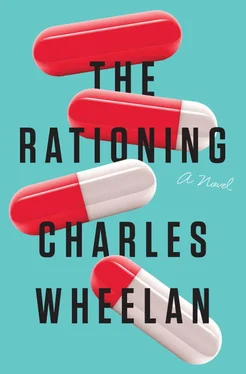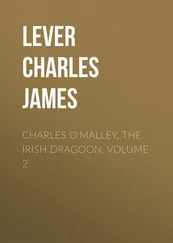He married a law school classmate. She helped him run his first few campaigns for the state legislature. They divorced during his first term in the state legislature, without children. To her (Marnie’s) credit, she kept a low profile during the presidential campaign, always politely refusing to make any comments about her ex-husband. “It was a long time ago, and we grew apart. I wish him the best, both personally and professionally. He’s a good man and will make a good president,” she would say. She never deviated from that line; eventually the press left her alone. The “mainstream media” recognized that she was not really a legitimate news story. The less reputable news organizations eventually got bored. There are only so many times you can follow a plain-looking fifty-year-old woman to the supermarket while the stories that generate clicks are happening elsewhere. It would be a real journalistic fumble to follow the President’s uninteresting ex-wife as she weighs kiwis when, just across town, a drunken celebrity has crashed his car through the front wall of a yoga studio with a prostitute in the passenger seat.
The President’s political career marched steadily on. Now single, he was elected governor of Virginia and then to the Senate. Not surprisingly, he showed up periodically on the glamour blogs as one of America’s most attractive single men, that kind of thing. If you believe the rumors, Washington was his sexual playground, particularly young lobbyists and staffers, but since he was not married there was no scandal. He eventually married the CEO of Kraft Foods, a forty-year-old corporate star, who had also been divorced a decade earlier and had no children. She was a fashion icon and a strikingly beautiful woman, albeit with a reputation for ripping people’s eyes out if it would improve cash flow. The most famous bloodbath for the bottom line was the “Mac ’n’ Cheese Massacre,” a mass firing of twenty-one hundred people three days before Christmas. A ham-handed PR executive tried to minimize the damage by releasing a statement saying that laying off employees before Christmas was the humane thing to do because it would help them budget more realistically for the holidays. This became a punch line for late-night comedians, at which point the PR executive was fired, too. The President and his CEO wife became one of America’s most glamorous power couples. Their wedding gained some notoriety when two tabloid helicopters nearly collided while filming the reception at a borrowed ranch in Santa Barbara. Had the helicopters gone down in a flaming wreck on the tent below, it would have taken out some of America’s smartest, richest, and most beautiful people.
The first time I met with the President one on one, I was ushered into the family quarters of the White House. He was in his small study, dressed casually, eating a piece of toast. I was struck that I was watching the President eat. “So you’re a hotshot scientist,” he said. I felt pretty damn important. “I understand you went to Dartmouth,” he continued.
“I did,” I said. I told him the year I graduated.
“Harold Scott wasn’t still there, was he?”
“He was.” Harold Scott was a legendary basketball coach who had been at Dartmouth for three decades. He turned the program around and went to the NCAA tourney a handful of times. The Ivy League champion always gets a bid, but Harold Scott’s teams actually won a few NCAA tournament games. My senior year they bumped off Kansas State in the first round. “Do you play?” the president asked.
“Basketball? Just for fun and exercise,” I said.
“We should throw it around sometime,” he offered.
The President of the United States wanted to play basketball with me. One-on-one? Or maybe it would be a pickup game with some other White House insiders. What does one wear to play basketball with the President? I could not rush out and buy all-new stuff, or I would look like a newbie. On the other hand, I could not show up in running shoes. There I was sitting in front of the President of the United States, trying to remember if I had kept my Converse basketball shoes from graduate school. Might they be in that box of stuff I left in my parents’ basement? Because the President wanted to play basketball with me.
“I don’t know if you have a girlfriend, or anything like that, but this might be a tough stretch. I appreciate your willingness to help out,” he said.
“I am seeing someone,” I offered.
“At some point, when this is over, I’d like to meet that person to say thank you.”
I realized that the President was referring to “that person” because I hadn’t specified that I was dating a woman. “Ellen,” I said.
As if he cared. I eventually learned that I would not be playing basketball with the President. Nor would Ellen and I be dining with him and his CEO wife. Rather, the President had a unique ability to speak with a relative stranger for a few minutes and leave him or her feeling like an important friend. It is an impressive skill, though it stings when you eventually see through it. Several days later I overheard him referring to me in a conversation with his Chief of Staff as “the guy in the brown shoes.” I was wearing a black belt for that first meeting, and I had been self-conscious that my belt did not match my shoes. It was an odd thing to worry about when thousands of people might die from an uncontrolled epidemic. I do not know if the President had noticed that my shoes and belt did not match; maybe the brown shoes were just my most distinguishing characteristic. In any event, he had no idea what my name was. And I know he did not spend a lot of time thinking about whether I was dating a man or a woman.
THE CHIEF OF STAFF HAD COME FROM HARVARD, WHERE SHE was dean of the Kennedy School of Government for over a decade. When I looked around during our meetings, she often struck me as the only “real” person in the room, in the sense that she had a life beyond Washington. She had kids who got sick, or had to be picked up after band practice. Obviously she had people to help her deal with that kind of thing, but she acted like someone you might run into at a school potluck. Her husband was a pediatrician, one of the nicest guys I met in Washington. They were both from Minnesota and conformed to every stereotype of the Midwest I had ever encountered, particularly the wide-eyed cheeriness and optimism. The Chief of Staff had been a star researcher at the University of Minnesota in the field of child and family poverty. Much of her work followed the effects of the 1996 Welfare Reform, and then the 2021 law that further curtailed benefits. Harvard hired her away to become dean of their policy school and she proved to be the rare academic who was also a good administrator.
When the President spent a stretch at the Kennedy School after losing a tight election for Governor of Virginia, they struck up a friendship—some said more, but I never saw any sign of that. During his second gubernatorial race (he won), she advised him on social welfare issues. Later, when he was in the Senate, she coordinated all his policy work, and when he was elected President, she became Chief of Staff. It was probably a mistake. She did not have the thick skin or the political experience necessary to operate effectively in that job. She should have been his domestic policy adviser, but the President was often accused of being a lightweight on policy, and a Chief of Staff from the Kennedy School at Harvard was supposed to address that weakness. I always found myself happy that she was in the room. Once she baked cookies. They were not great, if I am being honest, but she brought in this wobbly paper plate heaping with oatmeal chocolate chip cookies. The White House staff always gave us whatever we needed, including lots of cookies, but this homemade gesture, no doubt baked after the kids had done their homework and gone to bed, was one of the most human gestures that emanated from the cabinet group during this stretch, even if the cookies were not very good.
Читать дальше












